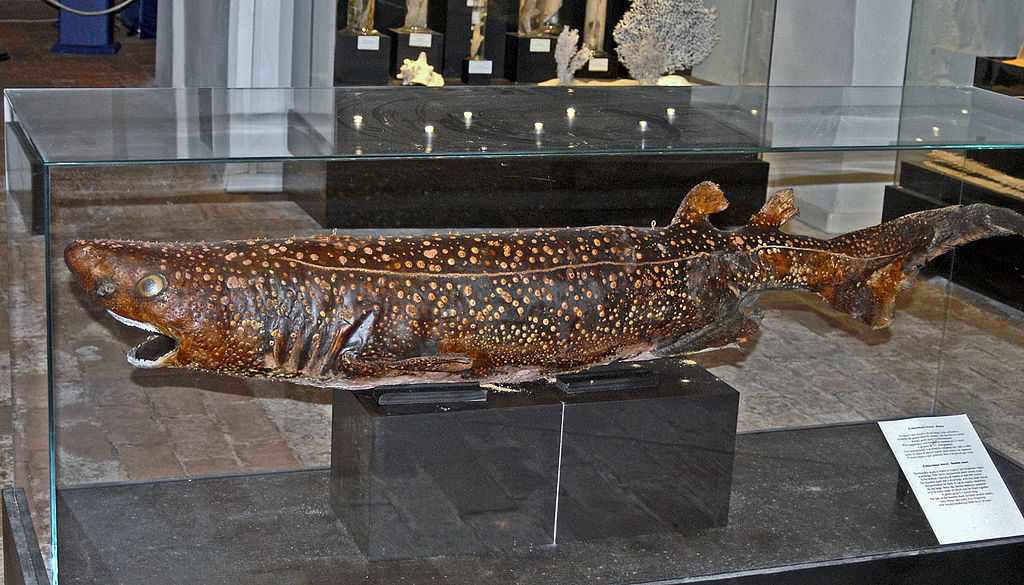There are only two currently living species of bramble shark in existence today – Echinorhinus cookei and Echinorhinus brucus. The picture above shows Echinorhinus brucus. They live off the coast of Argentina, Chile, and in the Indian Ocean typically at depths of 1,300–3,000 feet so they are rarely encountered by swimmers. They are purplish brown or black in color and can grow to be up to ten feet long. In Latin, the word “echino” refers to spines and “rhinus” refers to the nose. Therefore, bramble sharks are characterized by spiny bumps all over their bodies and a short, stumpy nose.
Recently, scientists reported in the Journal of Cretaceous Research that the teeth of an ancient relative of the bramble shark was discovered for the first time and named Echinorhinus maremagnum. It is hypothesized that this new shark comes from the Cretaceous period, which was approximately 79 million to 146 million years ago. That’s an old shark tooth!

The Calafate Formation (El Calafate) in Argentina.
The teeth were collected at two sites in South America — The Calafate Formation (El Calafate), a glacial formation at the southern tip of Argentina in the Santa Cruz province, and a village about 2,600 miles north of El Calafate called Algarrobo, in the Valparaíso Region of Chile. See this Google Map for a visual aid.
The scientists had not originally set out to find shark teeth. Those came by surprise.
While technicians were preparing a large dinosaur skeleton called an elasmosaurid plesiosaur that was found at El Calafate, the teeth were uncovered from the surrounding rock. What first turned out to be a challenge in preparing the samples lead to their discovery. All of these specimens were found in hard underwater rock layers, which limited the extraction techniques to only broad manual methods rather than more precise techniques like washing and sifting. As a result, technicians were able to see the teeth with their own eyes and pick them out.

A rough drawing of the shape of the Echinorhinus tooth found in Chile.
Four species of shark teeth were found, but only three were from previously discovered species. The fourth belonged to this new ancient echinorhiniform. It’s teeth are 1.5 cm (about a half an inch) long and have one cusp jutting to one side. A cusp is another word for “pointy thing” on a tooth, and many other bramble sharks have multiple cusplets, or pointy areas, on their teeth. This ancient shark showed no signs of cusplets, setting it apart from currently existing and many fossilized species. Due to copyright, we are unable to show the actual images, but they are available in the original paper. A rough drawing is pictured to the left.
This is an important discovery since the genus to which these sharks belong has a poor fossil record so any additions to it help researchers learn more about the evolutionary history of bramble sharks.


